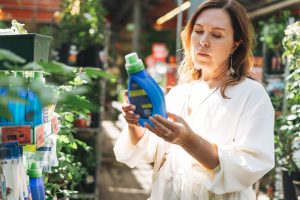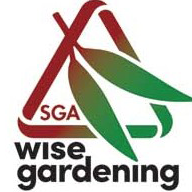Make Safe Garden Chemical Choices

To help make safe garden chemical choices, Sustainable Gardening Australia (SGA) has created WiseGardening, an Australia-first guide to risks and safety of garden chemical products to address garden pests and disease using publicly available, scientific information from university and government sources.
Sustainable Gardening Australia (SGA) is a not-for-profit, non-government organization with a strong interest (passion) for enabling gardeners to grow their own food, protect their health and that of the planet and all that is naturally on it. It has charitable status under the federal government’s Register of Environmental Organisations and is registered with the Australian Charities and Not-for-Profit Commission (ACNC).
WiseGardening was initiated over 20 years ago as a collaboration between SGA, Burnley Horticultural College (now part of the University of Melbourne), the garden centre Bulleen Art and Garden and local government.
Since 2016, our SGA team has further developed and refined WiseGardening to make it freely available as part of our web presence.
Aims of Process to Help Make Safe Garden Chemical Choices
In developing WiseGardening SGA has aimed for:
Achievement of more international sustainable development goals through reducing some of the impacts that our society has on the planet. SGA promotes natural, non-chemical methods to prevent and treat pest, disease and weed problems as the first line of defence. However, there are times when a chemical product is a necessary choice.
Compatibility with UN Sustainable Development Goals
Goal 3: Ensure healthy lives and promote well-being for all at all ages
Goal 12: Ensure sustainable consumption and production patterns
Goal 13: Take urgent action to combat climate change and its impacts
Goal 15: Sustainably manage forests, combat desertification, halt and reverse land degradation, halt biodiversity loss.
Alerting users to product risks. As you might expect, since these products are termed pesticides and weedicides where the suffix “icide” means “kill”, many chemical products, as well as killing their targets, carry risks to users and other species on our amazing planet – even when they are used very carefully. Labels on these products, instructions for use and Safety Data Sheets provided by manufacturers may not be consulted in-store when products are purchased or when old products with obscured labels are used.
Provision of easily accessible product comparison, which is evidence-based, about potential risks of chemical products and their ingredients or alternatives in one place.
Provision of information specific for Australian products. Similar guides are available for some areas overseas, such as Europe or the USA (www.growsmartgrowsafe.org) but these are not tailored for products and formulations used in Australia.
Transparency. We aim to augment the availability of information that manufacturers provide about their garden products. To this end, WiseGardening uses publicly available scientific information from many sources.
Accuracy. This means that assessments are systematic and based on robust scientific research from reputable sources. However, sometimes this information is unavailable due to commercial considerations and sometimes due to out-of-date or incomplete information. Where little or no information about a product or ingredient is available this is indicated in WiseGardening.
Independence and objectivity. No preference for any products or for any manufacturer is given.
Comprehensiveness and inclusiveness. We aim to include all chemical garden products available in Australia for non-agricultural use. Products available in other countries are not included since, elsewhere, they mostly differ in names and ingredients. We have also not restricted assessments to commercially manufactured products and have included alternative non-chemical approaches. If a product is missing it is not intentional; we aim to include all relevant products. We have not considered home-made mixes of household chemicals since it is not possible to obtain any accurate information about ingredients used in these preparations.
Currency. Assessment and ratings are routinely updated to determine if their ingredients, or other details in the product description, have changed. Information sources for ingredients are also frequently checked to ensure the latest publicly available scientific assessments are used. As products are often discontinued by manufacturers, we retain these products in our database so that assessments can be made of new products against discontinued products across product types. Sometimes, new products have the same name as a discontinued product but have a different composition. We aim to ensure that assessments of current products are no older than 1 year.
Ease of Use. The rating system should provide users with data that is accessible, able to allow comparison and easy to use. Data entry for WiseGardening has been structured so that assessment is performed automatically, drawing on ingredient information within SGA’s database.
Fostering productive change. We encourage the community and industry, through education, to engage with the change required to achieve a safer and more sustainable world.
WiseGardening does not:
- Provide comment on product effectiveness in achieving its stated purpose, or
- Endorse, or condemn any product, manufacturer, brand or supplier.
For full details of our methodology please see How we rate garden chemical products.
